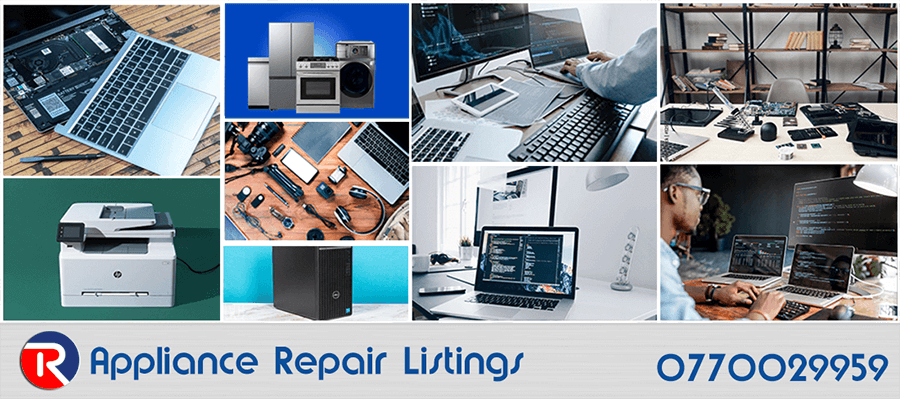
How to Remove Malware from Your Laptop
By Repair.co.ke
Malware, short for malicious software, can wreak havoc on your laptop, slowing it down, stealing personal information, or even rendering it unusable. Whether it’s a virus, spyware, ransomware, or adware, removing malware promptly is crucial to restoring your device’s performance and securing your data. At Repair.co.ke, we’ve seen countless laptops affected by malware, and we’re here to guide you through a step-by-step process to eliminate it safely. This 700-word guide will empower you to tackle malware on your own, with tools and techniques that work.
Step 1: Recognize the Signs of Malware
Before diving into removal, confirm that your laptop is indeed infected. Common symptoms include:
- Slow performance: Your laptop takes ages to load programs or respond to commands.
- Pop-ups and ads: Unwanted ads or browser redirects appear frequently, even offline.
- Unusual activity: Programs open or close without your input, or your antivirus is disabled.
- Data issues: Files are missing, corrupted, or encrypted (a sign of ransomware).
If you notice these, don’t panic—act quickly to limit damage.
Step 2: Disconnect from the Internet
Malware often communicates with remote servers to steal data or download more malicious files. Disconnect your laptop from Wi-Fi or unplug the Ethernet cable immediately. This isolates the infection, preventing further harm while you work on removal. If you need to download tools later, use a clean device, like a phone or another computer, to transfer them via USB.
Step 3: Boot into Safe Mode
Safe Mode starts your laptop with only essential programs, disabling most malware processes. To enter Safe Mode on Windows:
- Restart your laptop.
- Press F8 (or Shift + F8 on some models) repeatedly before the Windows logo appears.
- Select Safe Mode with Networking (this allows internet access for downloading tools if needed).
For macOS, Safe Mode is accessed by restarting and holding the Shift key until the login screen appears. Safe Mode reduces the malware’s ability to interfere with your cleanup efforts.
Step 4: Run a Reputable Antivirus or Anti-Malware Scan
Use trusted software to detect and remove malware. Free options like Malwarebytes, ESET Online Scanner, or Microsoft Defender (built into Windows) are effective. If you don’t have one installed:
- Download the installer on a clean device.
- Transfer it to your infected laptop via USB.
- Install and update the software’s virus definitions.
Run a full system scan, which may take several hours depending on your laptop’s storage size. Quarantine or delete any threats found. For stubborn malware, tools like HitmanPro or AdwCleaner can target specific types, such as adware or browser hijackers.
Step 5: Remove Suspicious Programs and Extensions
Some malware disguises itself as legitimate software or browser extensions. On Windows, go to Control Panel > Programs > Uninstall a Program and remove anything unfamiliar or recently installed without your knowledge. On macOS, check the Applications folder and drag suspicious apps to the Trash.
For browsers:
- Open your browser’s settings.
- Navigate to Extensions or Add-ons.
- Disable or remove any unrecognized or unwanted extensions.
Reset your browser settings to default to eliminate lingering changes made by malware.
Step 6: Clear Temporary Files
Malware often hides in temporary files. Use your laptop’s built-in tools to clear them:
- Windows: Open Disk Cleanup (search for it in the Start menu) and select temporary files, cache, and recycle bin contents.
- macOS: Go to Finder > Go > Go to Folder, type
~/Library/Caches, and delete the contents.
Alternatively, tools like CCleaner can automate this process, but ensure you download it from a trusted source.
Step 7: Update Your System and Software
Outdated software is a common entry point for malware. After cleaning your laptop:
- Reconnect to the internet.
- Update your operating system (Windows Update or macOS Software Update).
- Update all installed programs, especially browsers and antivirus software.
Enable automatic updates to prevent future vulnerabilities.
Step 8: Change Passwords and Monitor Accounts
Malware may have compromised your accounts. Once your laptop is clean:
- Change passwords for all critical accounts (email, banking, social media) using a secure device.
- Use strong, unique passwords and consider a password manager.
- Enable two-factor authentication (2FA) where available.
Monitor your accounts for unusual activity and check your credit reports if sensitive data was exposed.
Step 9: Prevent Future Infections
To keep your laptop safe:
- Install a reputable antivirus and keep it updated.
- Avoid downloading files or clicking links from unknown sources.
- Be cautious with email attachments, even from known contacts.
- Regularly back up your data to an external drive or cloud service.
When to Seek Professional Help
If malware persists after these steps, or if you suspect ransomware has encrypted your files, contact a professional. At Repair.co.ke, we specialize in advanced malware removal and data recovery, ensuring your laptop is restored to full functionality.
By following this guide, you can remove most malware infections and protect your laptop moving forward. Stay vigilant, and your device will remain a reliable tool for work and play.
Repair.co.ke – Your Trusted Partner in Laptop Repairs